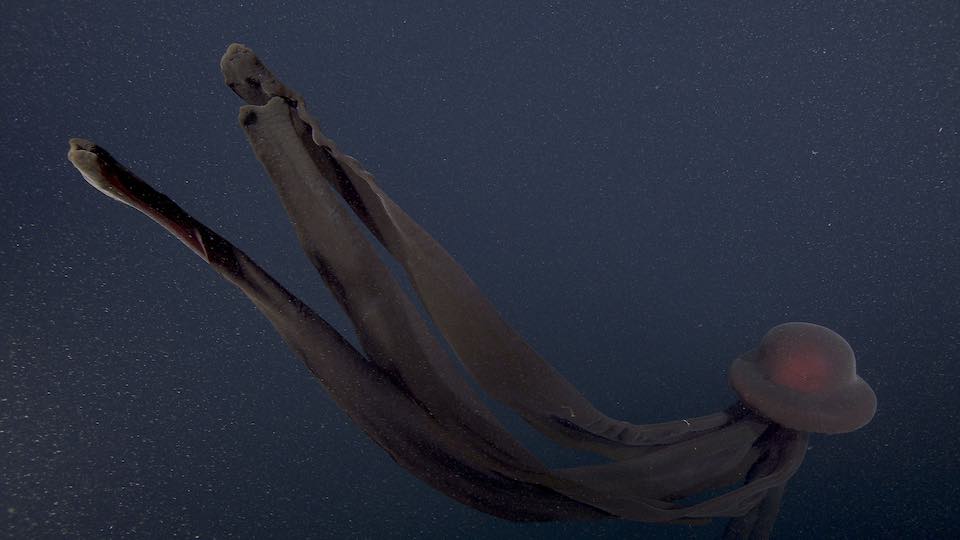Sometimes science likes to remind us of just how terrifying life can be. The latest reminder comes in the form of new footage captured by scientists. The footage was captured in the deep waters of Monterey Bay, California, and showcases a giant phantom jellyfish and its massive mouth-arms.
The phantom jellyfish showcased in new footage
The Monterey Bay Aquarium Research Institute (MBARI) captured the video of the jellyfish using an ROV Doc Ricketts. The creature was spotted roughly 990 meters below the surface of the bay. This is only one of nine times that the Institute has come across one of the phantom jellies throughout thousands of dives.
Part of what makes this jellyfish so unique—and somewhat terrifying at the same time—are the four ribbon-like arms that extend from its mouth. The arms can grow upwards of 33 feet in length and are used by the jelly to capture prey and transport it to its mouth. It’s a spectacular sight, seeing the jelly floating through the deep of Monterey Bay. Unfortunately, it’s probably not as spectacular for anything caught in them.
A rare deep-sea creature

Scientists collected the phantom jellyfish for the first time in 1899. Officially known as Stygiomedusa gigantea, scientists have only encountered this rare creature around 100 times.
The phantom is among the largest jellyfish in the world. Despite that, Scientists have caught sightings of the phantom all over the world. MBARI says that the animal is so rare because it usually lives too far down in the ocean for humans or even remote submarines to access. Luckily, the footage captured by MBARI’s submarine is here to give us a closer look at it.
These jellyfish tend to have a wide 3.3 foot or larger sunhat-shaped bell. The long mouth-arms hang loosely behind it as it moves through the ocean. It propels itself forward with small pulses from its head. It pulls anything caught in the arms to its mouth.
Scientists usually use trawl nets to capture and study deep-sea creatures. But, these rare creatures are hard to catch in traditional trawl nets. That makes them difficult to study. Deep-sea jellyfish tend to turn to gelatinous goo when captured in nets. Because of that, we have to rely on remote-controlled submarines to get a closer look at them. You can check out the video for yourself to see the phantom jellyfish in action.







